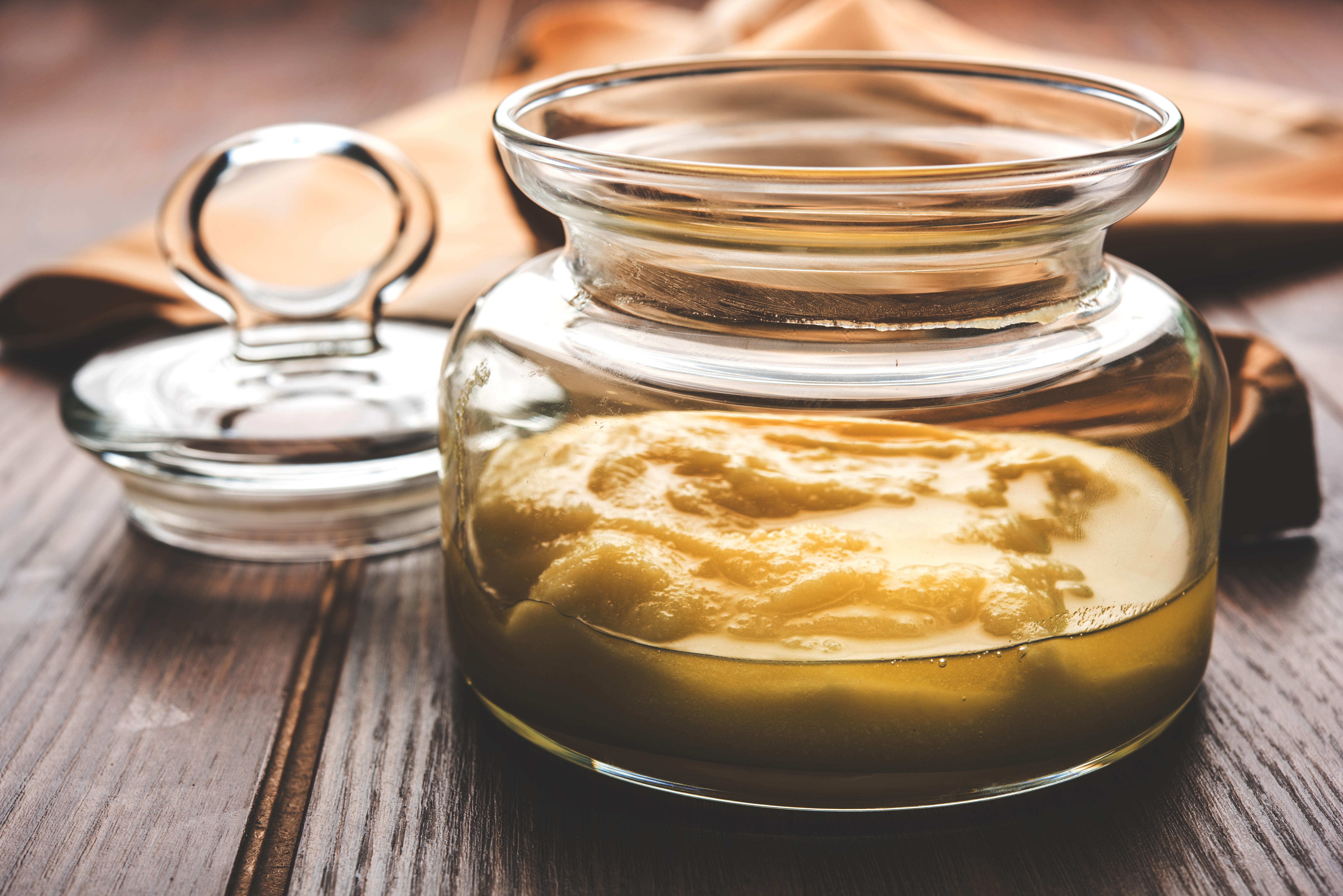
You may have noticed that on some diets, in particular the Whole30 diet, you are not allowed to have butter, but you can have Ghee. Why is that?
First let’s learn a little about what Ghee is. Commonly referred to as clarified butter, Ghee is a fat traditionally used in Indian cooking. It is hard to find in all grocery stores, but you can certainly order it online or easily make at home!
Making ghee at home is simple – simply melt the butter at medium heat until it boils. When the butter starts to melt, milk solids separate, causing the mixture to take on a clear golden color. After boiling, you can strain the ghee and seal it in a glass jar.
Yes, Ghee is made from butter, but in the process of making ghee, lactose and milk proteins are reduced to minimal amounts. This is great for those with dairy sensitivities who want to use butter in their cooking. I would not necessarily label ghee “healthy” because it is high in saturated fat by nature, but it is certainly a great option for those who are on a diet that restricts dairy products.
Here are three reasons to consider using ghee in your cooking
- Ghee has a high smoke point – The smoke point of ghee is higher than regular butter, coconut oil, or olive oil, making it your ideal choice for sautéing foods.
- Ghee has a long shelf life – Ghee can be stored in an airtight container, at room temperature for up to three months.
- Ghee is low in dairy – Ghee has very low contents of casein, which is the main milk protein in dairy products, making it a better choice for people with intolerance to dairy products.
Step-by-step guide to making ghee
- Heat a skillet to medium-low, then add butter. Stir constantly with a wooden spoon until it has melted entirely (about five minutes).
- Once the butter is melted and bubbling, turn the heat down so that it remains at a simmer.
- Cook for 20-30 minutes, by that time the milk protein will start to separate. Some of the milk proteins will float to the top of the liquid, while others will be on the bottom.
- Skim the milk protein off of the top of the butter with a fine-mesh sieve and discard.
- Turn the skillet back on medium-low and wait for the milk proteins on the bottom of the pan to brown, but not burn (5-10 minutes).
- Remove the pan from the heat once the proteins start to brown, and allow the mixture to cool for five minutes.
- Strain your ghee through cheesecloth and into a glass container. This rids the mixture of the milk proteins that had started to brown at the bottom of the pan.
- Store the mixture in a cool area or in the refrigerator. The ghee will solidify overtime in the jar and be ready for you to use in your cooking or as a spread!

 Posted by
Posted by

